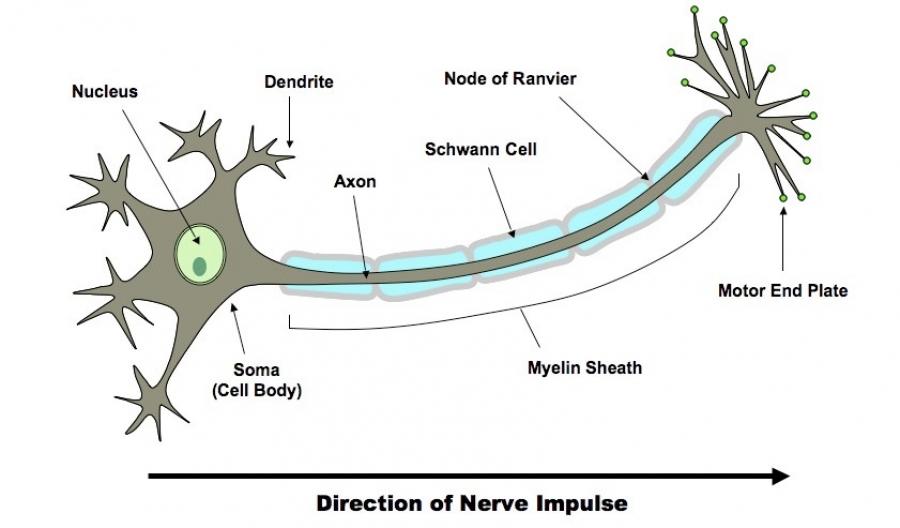MCQ ON NERVE IMPULSE class 11 for NEET | NERVE IMPULSE class 11 | MCQ NERVE IMPULSE with Answer | Check the below NCERT MCQ question for class 11Biology based on the with Answers.

MCQ ON NERVE IMPULSE class 11 for NEET
MCQ on NERVE IMPULSE class 11 Biology with answers were prepared based on the latest pattern.We have provided class 11 Biology MCQs question with Answers to help students understand the concept very well.
MCQ ON NERVE IMPULSE is useful for NEET / CSIR / UGC / CBSE / ICSE / AIIMS / EXAM / AFMC EXAM / STATE LEVEL MEDICAL EXAM 2022-23 , 2023-24
INTRODUCTION:-
Nervous system has two special properties: electrical excitability and conductivity
Electrical excitability is the ability of nerve cells to generate an electric impulse In response to a stimulus by altering the normal potential difference across their plasma membrane.
Conductivity is the ability of nerve cells to rapidly transmit the electric impulse is wave from the site of its origin along the length in a particular direction.
Resting potential is a resting nerve fibre shows a potential difference between the inside and outside of plasma membrane.
Outside a plasma membrane is the extracellular fluid which is positively charged beat respect to the cell contains inside a plasma membrane.
The difference in electrical charges across the plasma membrane is called resting potential. Mebrane with resting potential across it is said to be electrically polarise.
Action potential:-when when honor fibre receives electrical chemical or mechanical stimulus the potential across its membrane is momentally Reverse at a point of excitation. The contents inside of the cell at excited site become positively charged with respect to extracellular fluid outside it. The change in polarity across the plasma membrane is known as action potential. The mebrain with reverse polarity across it is said to be depolarized. The reverse polarity then quickly passes as a wave along the nerve fibre.
MCQ ON NERVE IMPULSE class 11 for NEET
1. Nerve cell do not divide because they do not have
(a) nucleus
(b) Centrosome
(c) golgi body
(d) mitochondria
Ans (b) centrosome
2. Sense of smell is perceived by
(a) pituitary
(b) hypothalamus
(c) olfactory lobe
(d) cerebrum
Ans. (c) olfactory lobe
3. Which one of the following does not act as neurotransmitter?
(a) cortisone
(b) acetylcholine
(c) epinephrine
(d) norepinephrine
Ans. (a) cortisone
4. In parasympathetic nervous system , which of the following is released ?
(a) epinephrine
(b) nor-epinephrine
(c) serotonin
(d) acetylcholine
Ans.(d) acetylcholine
5. 5 th cranial nerve of frog is called
(a) optic nerve
(b) vagus
(c) trigeminal
(d) ophthalamic
Ans.(c) trigeminal
6. Pnumotaxic centre is present in
(a) cerebrum
(b) cerebellum
(c) medulla oblongata
(d) pons varolii
Ans.(d) pons varolii
7. Myelin sheath is derived from
(a) neuroglial cells
(b) Schwann cells
(c) nerve cells
(d) all the above
Ans.(b) nerve cells
8. Mammalian brain defers from in amphibian brain in possessing
(a) cerebellum
(b) Corpus callosum
(c) olfactory lobes
(d) hypothalamus
Ans.(b) Corpus callosum
9. Chemical transmission of nerve impulses from one neuron to another or from a neuron to muscles is carried out by
(a) cholecystokinin
(b) acetylcholine
(c) cholesterol
(d) all of these
Ans. (b) acetycholine
10. All sensory pathways to the cerebral cortex synapse at the
(a) pons
(b) hypothalamus
(c) thalamus
(d) cerebellum
Ans. (a) pons
11. Which part of human brain is largest?
(a) cerebellum
(b) thalamus
(c) cerebrum
(d) medulla
Ans.(c) cerebrum
12. All sensory pathways to the cerebral cortex synapse at the
(a) pons
(b) hypothalamus
(c) thalamus
(d) cerebellum
Ans . (a) pons
13. Myelin of the nerve fibres of the central nervous system is produced and maintained by
(a) Oligodendrocytes
(b) Astrocytes
(c) Microglia
(d) Schwann cells
Ans.(d) Schwann cells
14. Primitive nerve system is formed in
(a) Sponge
(b) Cnidaria
(c) Echinodermata
(d) Annelida
Ans. (b) Cnidaria
15. Pons, cerebellum and medulla together constitute
(a) hind brain
(b) mid brain
(c) fore brain
(d) cerebellum
Ans.(a) hind brain
ALSO READ:-
● YOU CAN WATCH BIOLOGY SIR Youtube channel
16. Cells of Schwann are associated with
(a) Nervous system
(b) Skeleton system
(c) Cardiac muscles
(d) connective tissue
Ans.(a) nervous system







Leave a Comment